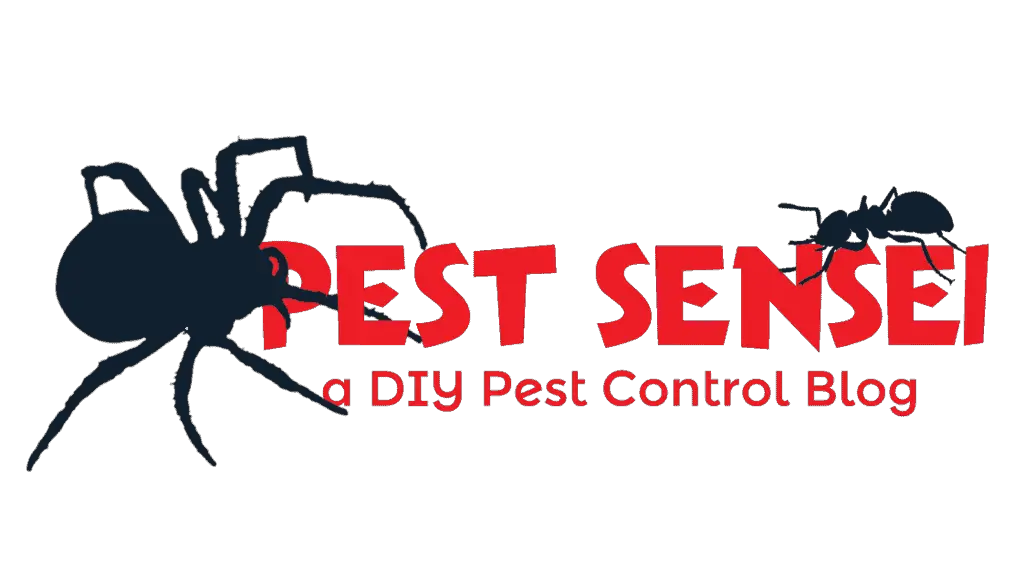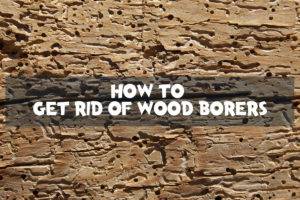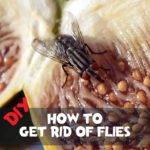Wood borers can damage your wooden structures and furniture. Luckily, they are not as destructive as termites. In this guide, I’ll tell you how to get rid of wood borers.
To get rid of wood borers, treat unfinished infested wood with Bora-Care. Finished wood can only be treated with foam but generally ineffective. Consider engaging pest management professionals for fumigation if it is too expensive or not feasible to replace the infested items. If you buy woods for new projects, treat them before using.
Continue reading for more details.
All You Need to Know about Wood Borers as Pests
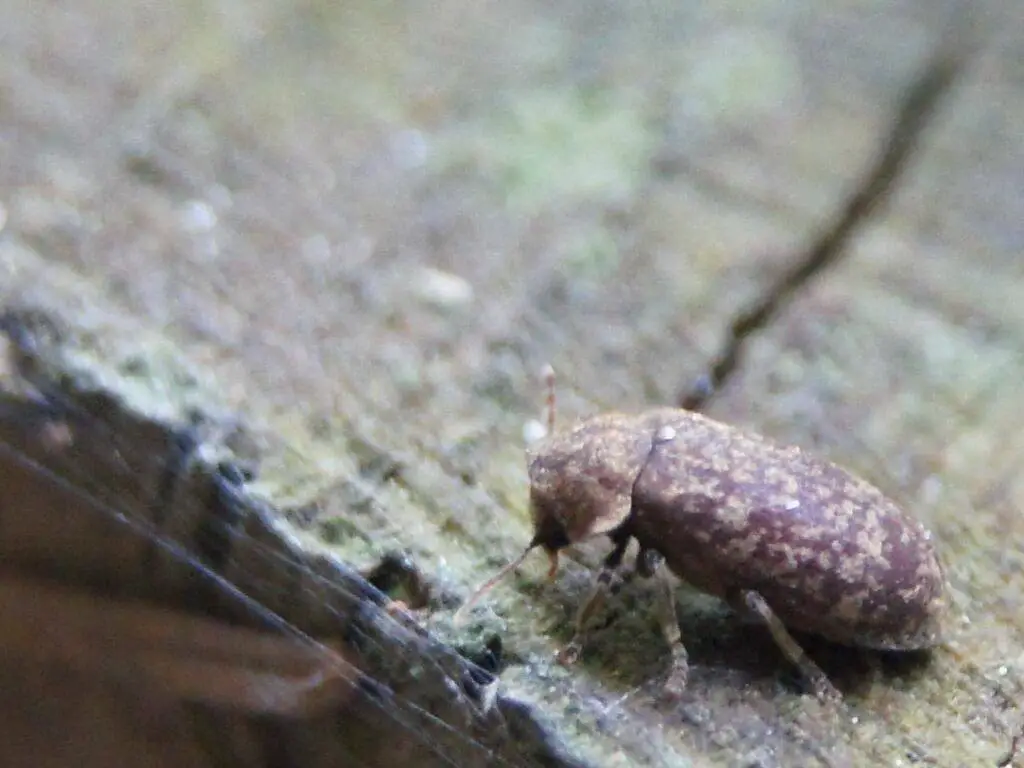
Wood borers are beetles of various species including powder-post beetles, bark beetles, flathead borers, etc. They are named for their close association with wood.
Wood borers undergo 4 life stages: egg, larva, pupa, and adult. In most cases, the larval stage is the one causing damage to wood. That’s why they are also called the woodworms.
Adult borers lay eggs on cracks and holes of raw wood. Once the eggs hatch, the larvae eat their way into the wood. They continue to eat and grow until they turn into adult beetles.
Generally, the larvae can stay inside the wood for 2-10 years before turning into adults. Certain species emerge after a few months, while others emerge after 30 years. Hence, you may have woodborer issues undetected for more than 10 years, before the infestation becomes apparent.
Once they turn into adult beetles, the wood borers leave the wood through what we call the exit holes.
If you are looking for guides to get rid of other wood-boring insects such as carpenter ants and termites, please refer to their respective guides.
How to Identify Wood Borer Infestation?
There are 2 telltale signs of wood borer infestation: the presence of exit holes on wood, and frass of the beetles.
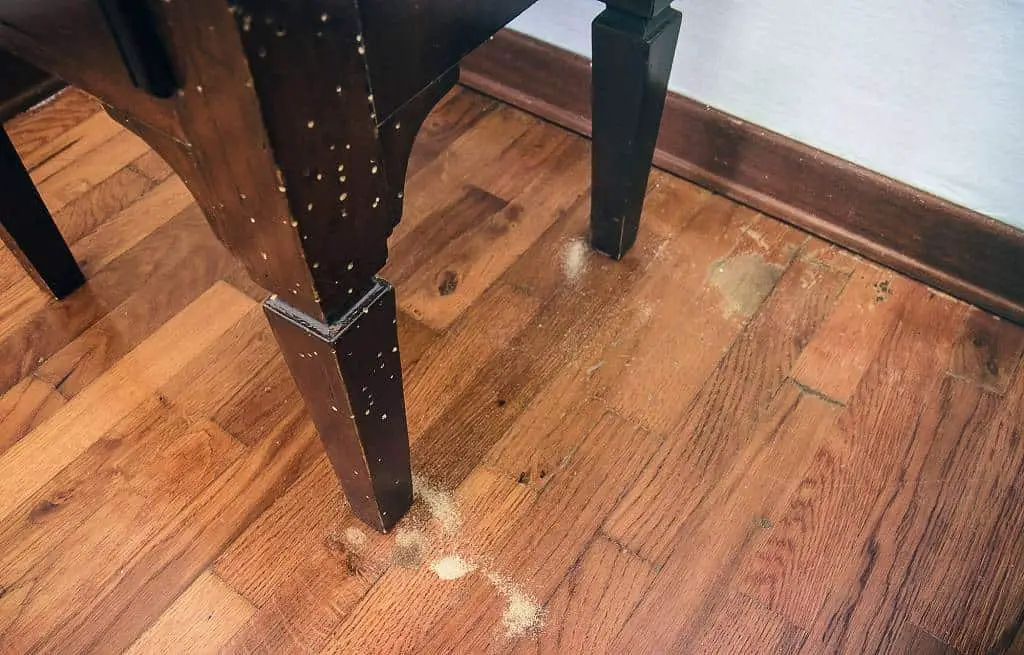
Adult wood borers do not live in the woods. They exit the infested wood through the exit holes they made on the wood. Depending on species, the exit holes are either round or oval, with diameter ranging from 1/32 to ½”.
As the larvae eat through the wood, they produce dry frass. You can either find the frass outside the exit hole or within the tunnels in the infested wood. Frass at the exit hole typically looks like a pile of fine sand.
How to Treat Infested Woods?
Unfinished Wood
Unfinished woods are those not coated with varnish or stain. If the infested wood is unfinished, treatment is the easiest and most effective.
You can use products such as Bora-Care to treat infested wood. Bora-Care contains disodium octaborate tetrahydrate which is relatively safe for humans and pets.
Spray or paint the infested wood from all sides. Bora-Care can easily penetrate the wood to reach the wood borers deep inside and kill them.
Finished Wood
If the wood is varnished or painted, Bora-Care will not work. Instead, you need to drill holes on your wood to inject insecticide inside.
The issue with this is, you wouldn’t know where the beetles are. You have to drill multiple holes and hopefully hit the tunnels.
Once you hit the tunnels, inject insecticide in foam formulation, such as Alpine Ant & Termite Foam, into the drilled holes until it overflows.
The advantage of using foam is that it can travel vertically and horizontally in the tunnels to fill up all cavities in the wood. This will ensure the insecticide reaches the wood borers to kill them.
Even if the insecticide doesn’t reach the wood borers, it leaves residues in the wood. The wood borers will eventually be killed if they come into contact with the treated areas.
I prefer not to use this method, because you may end up creating more damage to the wood by drilling, than the wood borers did. After all, you need luck to hit the tunnels.
Replacing Infested Woods
Replacing items infested by wood borers is often the best option, if feasible. Especially if the infested item is finished wood.
Fumigation
The best way to get rid of wood borers from finished wood is by fumigation. This can only be done by pest management professionals or licensed fumigators. You can find a service provider near you on Networx.
Fumigation is a dangerous process that utilizes toxic gas. During fumigation, your house, or infested items, are encased in a tent. Fumigant is then released into the tent.
Because fumigants are gases, they can easily penetrate into the tunnels and reach the wood borers to kill them.
While fumigants are highly poisonous, it leaves no stains and residues after the process. It is completely safe to reoccupy your house after proper ventilation.
Other Treatment Methods
There are other safer treatment methods for wood borers, such as controlled atmosphere treatment and heat treatment. Both require sophisticated equipment and can only be done by trained personnel.
Controlled Atmosphere Treatment
In controlled atmosphere treatment, infested items are encapsulated in a “bubble”. Oxygen is then removed from the bubble and replaced with inert gas such as nitrogen. As the oxygen level drops to near 0%, the wood borers are killed by asphyxiation.
The whole process takes about 2 months to complete, and it is very expensive. Controlled atmosphere treatment is usually used to treat high value items that are sensitive to fumigants.
Heat Treatment
In heat treatment, infested articles are placed in an endotherm bag. They are then heated to a certain temperature to kill the wood borers.
Excessive heat may damage certain finishing. It is best to consult your service provider before confirming the treatment.
How to Prevent Wood Borer Infestation?
It is difficult to prevent wood borer infestation because the woods may have already been infested before they are used to build furniture or houses. You can only prevent wood borer infestation on unfinished woods.
Treat all the unfinished furniture and beams in your house, roof void and crawl space, using Bora-Care. Bora-Care provides long lasting protection against wood borers. It also helps to protect the woods by preventing growth of fungi.
If possible, paint the unfinished woods with paint, varnish, wax or other finishing to provide further protection to your wood.
If your finished furniture is not already infested by wood borers, you don’t have to worry about infestation. Generally, wood borers do not attack finished woods.
Finally, fix excessive moisture or water leaks that can damage the woods. Wood borers prefer to attack woods with high water content.
